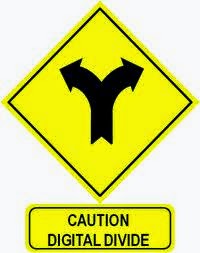Community development
Communities consist of individuals, families, groups, organisations and institutions, all of which contribute to and affect the development of the whole. Often they are sources of untapped skills, expertise and knowledge which, if encouraged and stimulated, can contribute not only to the development of an individual community itself, but to society in general.
Today's commercial organisations harness networked technology to improve business efficiency and effectiveness. Similarly, modern electronic community networks provide both community information and a means of electronic communication within and between communities.
Communities consist of individuals, families, groups, organisations and institutions, all of which contribute to and affect the development of the whole. Often they are sources of untapped skills, expertise and knowledge which, if encouraged and stimulated, can contribute not only to the development of an individual community itself, but to society in general.
Today's commercial organisations harness networked technology to improve business efficiency and effectiveness. Similarly, modern electronic community networks provide both community information and a means of electronic communication within and between communities.
Community information resources
Clearly the type of information provided is a central issue to the success of any community information resource, and community-based Internet initiatives are no different. The information needs of any community can only be ascertained by an exhaustive exercise of community analysis or profiling. In other words, it is essential that the community is given the fullest opportunity to participate in the process by being asked about their information needs.
For a community information resource to be relevant to a community, it must also be accessible.
Most people today still do not have computers in their homes, and even fewer have modems which enable access to online information resources. This means a mechanism must be found which enables people to 'drop-in' to sites located throughout the community.
Public access points which encourage the 'drop-in' visitor can be situated in locations such as community centres, libraries, schools, health centres. Even pubs and supermarkets might be considered suitable locations.
However, access is not simply an issue of public access points and their geographic location alone. Citizens must be able to use the technology and have the capability to use the information. Because these are skills that most people still do not possess, the issue of access should be linked to training, education and learning.
Social role of community networks
Information and communication technologies can underpin and aid the activities taking place within a community, but they do not replace them and are no substitute for them. Community networks are primarily social networks which harness technology to provide an additional means of communication between individuals/groups/organisations, etc..
Community networks can facilitate the sharing of information between organisations, and thereby encourage co-operation and collaboration between them. This approach can be particularly useful to the voluntary sector, by pooling resources in this way, organisations can avoid duplication of effort; put clients in touch with other appropriate organisations and agencies; and meet the needs of their client groups more effectively and efficiently.
Community centres make ideal public access points, or nodes on the community network because they are often the hub of existing social networks. ICT can be used to reinforce these social networks by strengthening existing, and developing new relationships between community groups, organisations and individuals.
A community centre also provides the ideal setting for community run ICT training and education courses. Schools, public libraries, supermarkets and even pubs, in fact anywhere where people meet and communicate can be used to provide some form online access.
Radio is very powerful because it reaches a huge audience quickly and because it allows
the people in that huge audience to interact with one another more easily than television
viewers or newspaper readers.
Benefits of Radio
Reaching the public - Radio is the most accessible of media because it can accompany
you in whatever you do, and wherever you go:
1 Driving in a car
2 Working in the fields
3 Cooking dinner
You don't need to be literate or rich to listen to radio or to take advantage of its resources.
In fact, educators and organizations have found that radio is the best way to get important
messages across.It is inclusive. Radio can reach most people, including the poor,
the marginalized and those who cannot read or write.
Reaching the public now - Radio is immediate. It is the modern equivalent of the village
story-teller. Through words, sounds and the human voice, radio talks to an audience
directly. It gives listeners the stories they need to know in order to better understand the world.
Now, fast developing technology is fueling an information revolution. The new media, digital broadcasting and the internet are sweeping away the limitations of the analogue world.
The nature of the relationship between the broadcaster and its audience is changing. We are broadcasting online grabbing the ears and eyes of netizens, have the potential to become viable alternatives to on-air broadcasting.
The reach of broadcasting stations is limited by signal range, whereas online broadcasting is available wherever internet coverage is available. There are no boundaries.
Day, P. (1997, January 1). The community benefits of electronic networking. Retrieved October 17, 2014.












































